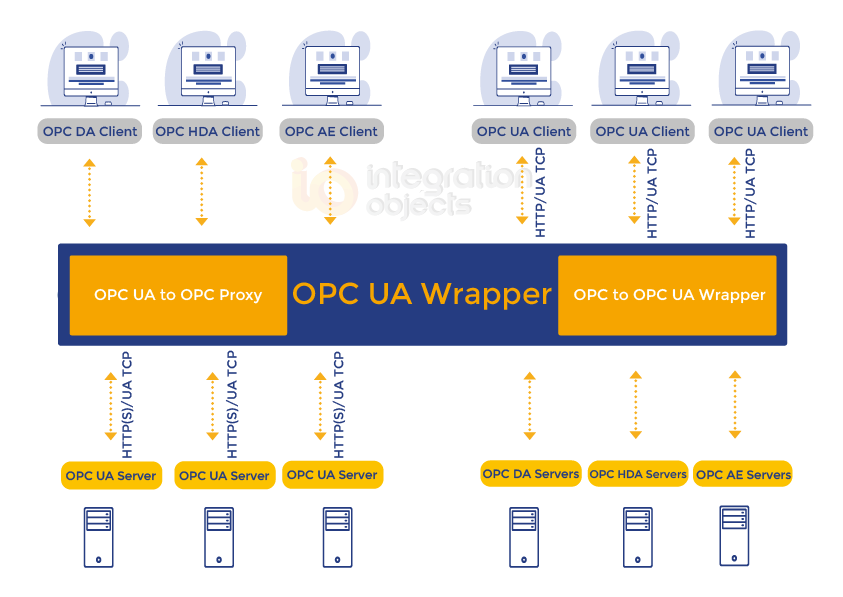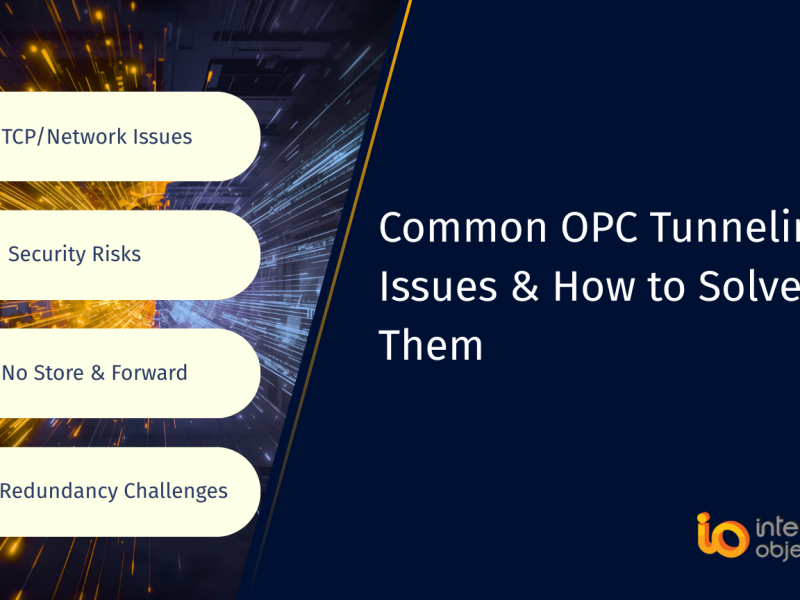In the ever-evolving landscape of industrial automation, OPC has long served as the foundation for communication between devices and systems. As industries progress, the demand for communication standards has evolved, leading to a transformation of OPC standards to meet the industry’s growing needs.
While the once-revolutionary OPC standard was robust in its time, it has faced challenges in meeting modern industrial requirements.
With the increasing demand for industrial cybersecurity, flexible data modeling, and platform independence, original equipment manufacturers (OEMs) and software development companies are adopting OPC UA as their preferred protocol. This shift has led industrial end-users to use OPC UA instead of OPC Classic. So, it is essential to highlight the disparities between OPC Classic to OPC UA
Key differences between OPC Classic and OPC UA
OPC UA offers significant improvements in security, platform independence, data modeling, and interoperability compared to OPC Classic. These include:
1- Security
Based on Microsoft’s COM/DCOM technology from the nineties, OPC Classic historically lacked security features in terms of encrypted communications, minimum TCP ports, and support of distributed network architectures using several domains, firewalls, and DMZ. OPC UA prioritized security with built-in encryption and authentication mechanisms as well as configuration communications parameters, thus ensuring a more secure framework for industrial communications.
2- Platform Independence
OPC Classic is tied to the Windows operating system, facing challenges in integrating with diverse platforms. OPC UA on the other hand is designed for platform independence, enabling seamless communication across various operating systems including Windows, macOS, Android, and Linux. It can also be used on embedded systems allowing automation device suppliers to embed OPC UA into their PLCs and RTUs.
3- Data Modeling
While OPC Classic is very limited in representing complex data structures as it uses tag-based address spaces, the OPC UA supports sophisticated representation of industrial data and complex structures, facilitating a richer exchange of information. OPC UA defines an integrated address space and an information model in which process data, alarms, historical data, and program calls can be represented.
While using OPC UA in new implementations of automation systems and software products, supporting OPC UA in existing automation installations, devices, and software remains a challenge. Options to migrate from OPC Classic to OPC UA with minimum budget and architecture changes are required.
Introduction to OPC UA Wrapper:
The OPC UA Wrapper acts as a plug-and-play bridge between OPC Classic and OPC UA, facilitating the coexistence of both protocols.
Comprising an OPC UA Wrapper and an OPC UA Proxy, the software streamlines the integration process, allowing organizations to transition smoothly to OPC UA with minimum system changes.
Download OPC UA Wrapper
Migration challenges and solutions
| Category | Challenge | Solution |
| Data mapping | Involves mapping address spaces of distinct protocols. | OPC UA Wrapper intelligently maps address spaces, ensuring seamless translation of data between OPC Classic and OPC UA without the user’s manual action. |
| Security | Complex integration of robust security features. | OPC UA Wrapper supports built-in encryption and authentication mechanisms, managing security settings and certificates for secure communication, per OPC UA specifications. |
| Protocol Interoperability | Ensuring interoperability between different vendors and versions. | OPC UA Wrapper facilitates seamless communication, mitigating concerns related to protocol variations through standardized profiles. It supports OPC Classic DA, HDA, A&E as well as the DA, HA, and AC capabilities of the OPC UA protocol. |
| Efficient Handling of Real-Time and Historical Data | Migrating real-time and historical data efficiently. | OPC UA Wrapper allows efficient reading and writing of real-time data and historical data. |
| Efficient Handling of Alarms and Events | Migrating alarms and events efficiently. | OPC UA Wrapper enables reading and acknowledging of alarms and events, ensuring a smooth transition from OPC Classic A&E to OPC UA AC. |
OPC UA Wrapper Features
The OPC UA Wrapper includes a range of features including:
- COM Server to UA Server: OPC UA Wrapper facilitates access to OPC Classic servers from Unified Architecture clients, seamlessly presenting them as UA servers.
- UA Server to COM Server: it enables access to Unified Architecture servers from OPC Classic clients, making them appear as OPC COM servers
- Intuitive User Interface: Featuring a user-friendly configuration interface, the OPC UA Wrapper streamlines the migration process. Users can easily configure settings and manage integration through an intuitive environment
- Run as Windows Service: The created wrappers operate as Windows services in the background, ensuring continuous functionality
- OPC UA Security: The OPC UA Wrapper integrates security features from the OPC UA specification. This includes establishing secure communication channels, session tracking, encryption, and message signing. Users can select, manage, and modify security modes and user identity using the configuration tool.
- Log Capabilities: The application maintains log files with various logging levels, offering users insights into execution. The log file records both successful actions and errors, aiding in troubleshooting tasks.
- Read and Write OPC Items Values: Users can effortlessly read and write OPC item values, enhancing control and monitoring capabilities. This functionality is crucial for real-time data exchange between systems.
- Historical Data Read Capability: going beyond real-time data exchange, the OPC UA Wrapper supports historical data read capabilities. This feature allows organizations to analyze and derive insights from past industrial processes.
- Alarms and Events Capability: designed to enhance industrial monitoring and alerting, this functionality allows users to map alarms and events from OPC Classic Server to the OPC UA information model and vice versa, to efficiently manage alarms and events and ensure timely response and acknowledgement.
Refer to this demo video for instructions, configuration tips, and best practices on how to use OPC UA Wrapper



